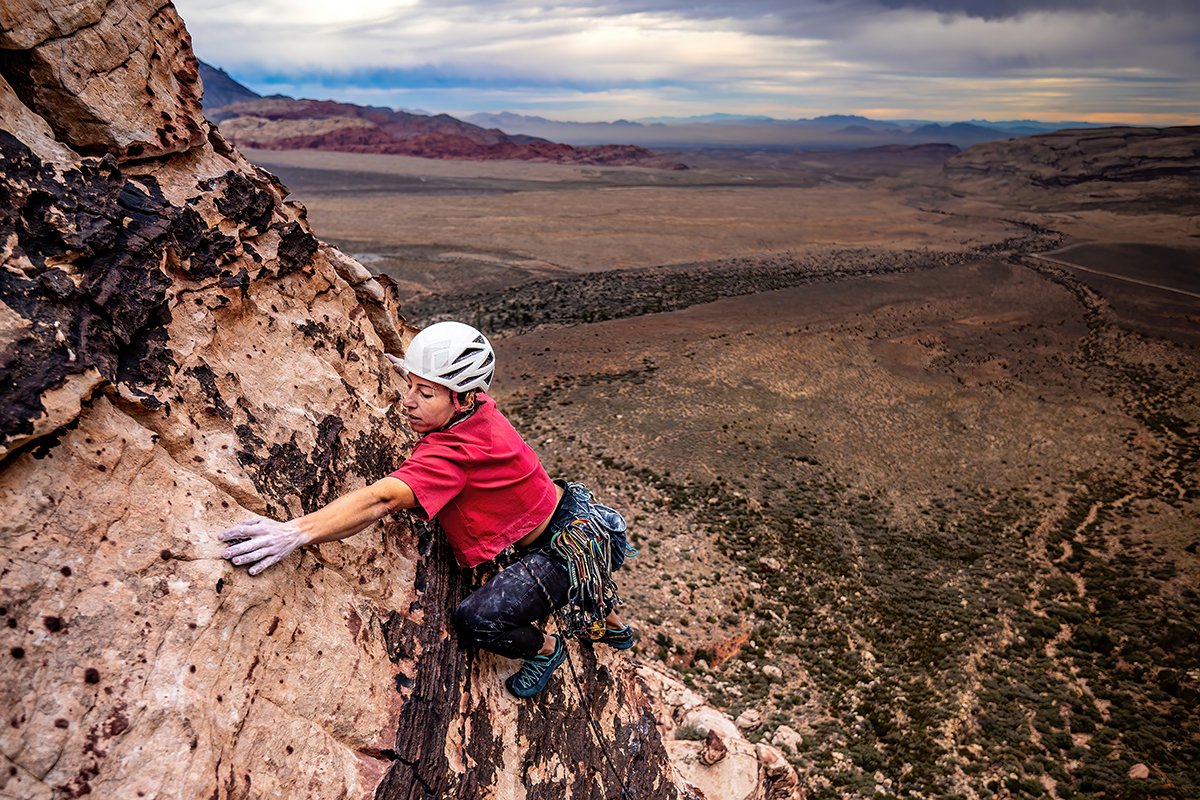Generations of climbers have sought out the wild and adventurous climbing found in America’s Wilderness areas. Places like New Hampshire’s White Mountains, the Rainbow Wall in Red Rock Canyon, Shortoff Mountain in Linville Gorge, and so many others offer climbers the opportunity to test our self-reliance in the backcountry, find peace and solitude, and connect with natural beauty at its finest.
Black Canyon of the Gunnison, Colorado. Ancestral Ute lands. © Brittany Hamilton
A Wilderness land designation offers the highest level of protection for public land with the goal of conserving the landscape for historical, scientific, and recreational purposes. Those protections change the way climbers interact with Wilderness areas, and call for our utmost respect for the natural and cultural resources found there. Here are five facts about climbing in Wilderness areas and what they mean for climbers.
1. A climber played a critical role in passing the Wilderness Act.
Yosemite National Park, California. Ancestral lands of Me-Wuk, Nüümü, and Miwok. © Francois Lebeau
Pioneering mountaineer and climber David Brower, known for placing the first ever climbing bolt in American rock, was instrumental in helping to pass the Wilderness Act during his tenure as Executive Director of the Sierra Club.
2. Bolts can only be placed by hand
Linville Gorge, North Carolina. Ancestral lands of the S’atsoyaha and Catawba. © Shannon Millsaps
The Wilderness Act specifically prohibits the use of any motorized equipment in Wilderness areas—including drills. When a bolt or fixed anchor is necessary for climber safety, it must be placed using a hand drill.
3. Climbing is a legitimate activity in Wilderness areas.
Rocky Mountain National Park. Ancestral lands of Tséstho’e, hinono’eino’ biito’owu’, and Núu-agha-tʉvʉ-pʉ̱. © Jon Glassberg
National Park Service (NPS) Director’s Order #41, Section 7.2, 2013 states that, “Climbing is a legitimate and appropriate use of Wilderness.” Nearly half of all Wilderness climbing areas are managed by NPS.
4. The Wilderness Act specifically protects human-powered recreation like climbing
Red Rock Canyon, Nevada. Ancestral lands of Southern Paiute and Western Shoshone. © Jenny Walters
The Wilderness Act defines Wilderness areas as places that provide opportunities for the kind of primitive, unconfined, and adventurous recreation that can’t be found anywhere else. Congress also declared that Wilderness Areas "shall be devoted to the public purposes of recreational, scenic, scientific, educational, conservation, and historical use.”
5. Only 7% of America's documented climbing is in designated Wilderness areas
North Cascades, Washington. Ancestral lands of Nłeʔkepmx Tmíxʷ, Syilx, Sauk Suiattle, Confederated Tribes of the Colville Reservation, Cayuse, Umatilla and Walla Walla. © Access Fund
Despite that small number, much of America’s most iconic climbing enjoys the protection of the Wilderness designation, including El Capitan in Yosemite, Long’s Peak in Rocky Mountain National Park, Moonlight Buttress in Zion National Park, Shortoff Mountain in North Carolina, Joshua Tree’s endless backcountry domes and boulders, the White Mountains in New Hampshire, and so many more.
But that 7% is just what’s documented and developed. Countless classic boulder problems or five-star adventure climbs are out there in America’s vast Wilderness yet to be discovered. Will you be the next intrepid climber to add their name to the history of Wilderness climbing?
How can climbers play their part in protecting these special places? It starts with remembering that climbing in these beautiful, wild landscapes is a privilege, and not a guarantee. Maintaining that access comes down to following a few simple principles:
Know Before You Go: Check with the managing agency for any rules or regulations specific to the area.
Leave No Trace: Tread lightly to minimize impacts, use removable protection whenever possible.
Keep a Low Profile: Don’t use any motorized tools or vehicles, don’t stash any pads or other gear, and consider leaving the Bluetooth speaker at home.
Take Action: Make sure you're signed up for our Action Alert network, and we'll let you know when your voice can make a difference.






